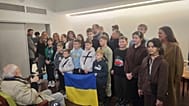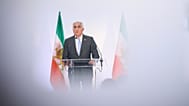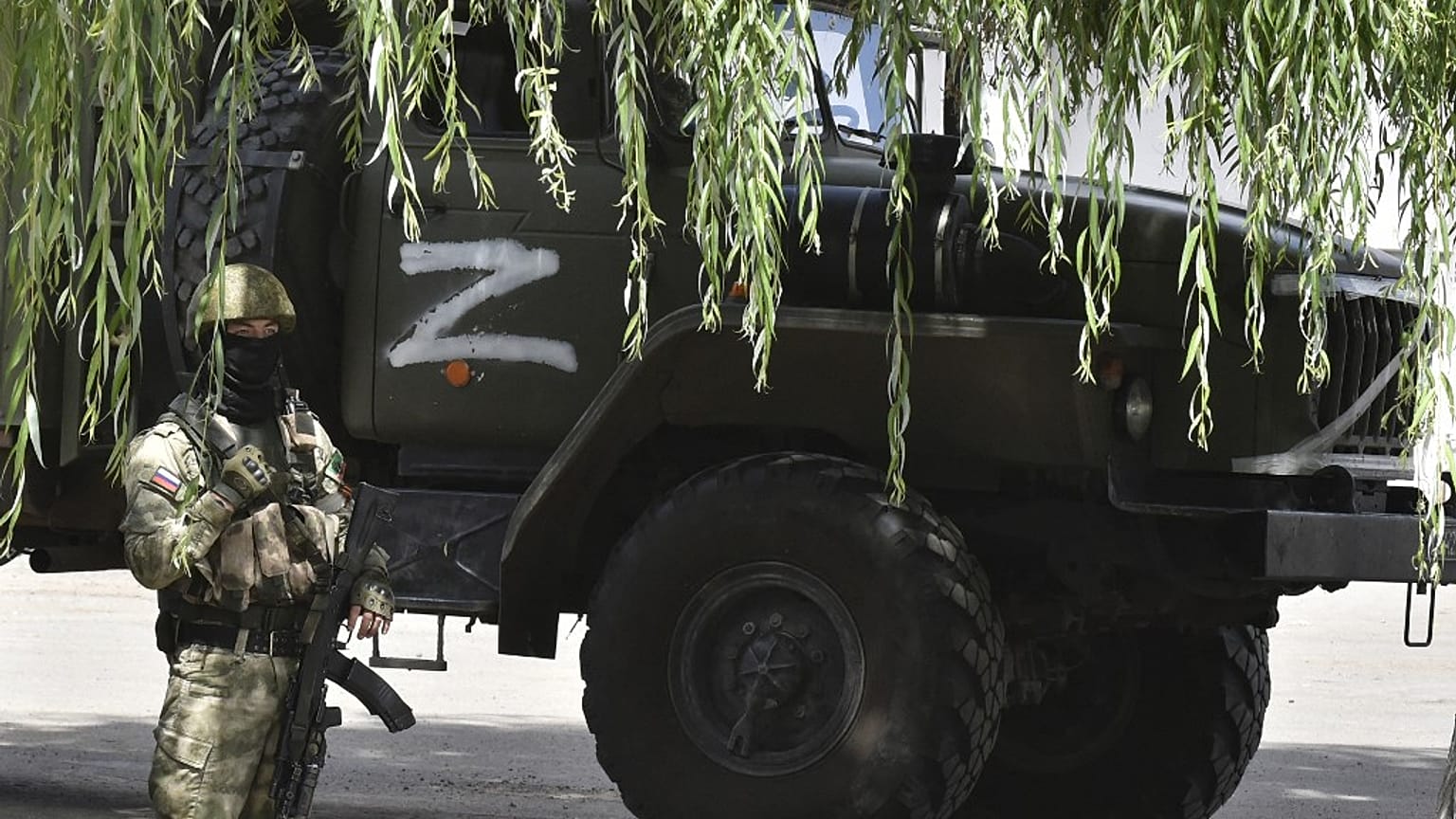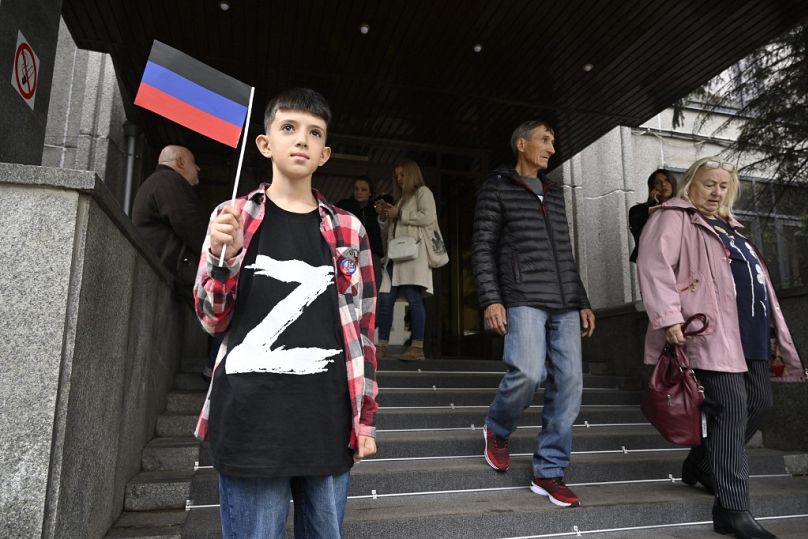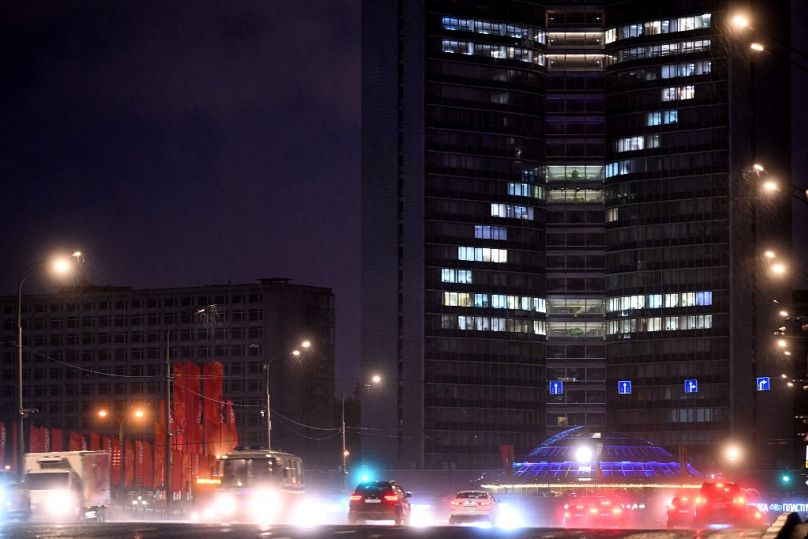By pushing the letter Z for political gain, one expert told Euronews the ominous white symbol may have "lost its charm".
Shortly after its tanks rolled into Ukraine last Spring, an ominous Z symbol went viral in Russia - seemingly from nowhere.
Terminally ill children were photographed making a Z shape outside of a hospice in the country's southwest, while Russian gymnast Ivan Kuliak was given a one-year ban after displaying the symbol on the podium next to his Ukrainian opponent.
The lightning rise of the distinctive white marking caused quite a stir, hitting the headlines the world over.
But in recent months usage of the Z appears to have dropped off. Its conspicuous absence was noted by Twitter users at Russia's Victory Day military parade in May, though this was also the case last year.
“There are a number of different factors why we’re not seeing it that much,” Emily Ferris, a Research Fellow specialising in Russian politics at the Royal United Services Institute, told Euronews, suggesting they all acted simultaneously.
‘A multi-purpose tool’
“The Z symbol grew organically," she explained. "When the war began, it wasn't a state-mandated symbol. But, eventually, the state took control of it."
The reason officials adopted the symbol, she says, was due to its "versatility", with the distinct marking meaning "basically anything to do with the war", such as “for victory”, "for Russia" or simple pro-war sentiment.
While this was useful in the initial stages of the war, especially in helping rally support, when the state incorporated the sign it “lost its charm”, Ferris told Euronews.
Governments have long adopted and reinterpreted symbols to serve their goals. One of the most famous examples is Nazi Germany’s use of the Swastika, which was transformed from an ancient symbol of well-being into the emblem of fascism.
Part of the Z symbol's possible decline is that, like many social trends, after rapid growth, the craze could have simply fizzled out.
It first spread on social media and was used by a lot of young people, being placed as a sticker on cars or graffitied around the streets.
Displaying the Z "was very much an activist, young generation type thing to be doing," said Ferris. And I think when the state tried to harness that momentum and do something political with it, it lost its allure."
"Something feels almost transgressive about symbols. You can reclaim them as your own. But when the government orders children to stand in a formation it takes the fun away," she continued.
The emergence of the symbol surprised some as Z itself is not a letter in Russia’s Cyrillic alphabet, coming instead from Latin. It reportedly originated from the marking of a military grouping, spreading from the battlefield to society.
Symbols feature in all military campaigns, helping rally troops on the battlefield.
“It's important to have something that you can unite behind," Ferris told Euronews. "It identifies you as within a certain group."
Ukraine’s Azov Brigade, which has courted controversy over its alleged neo-Nazi links, reportedly introduced a new golden trident chevron last June, with one member quoted by the World Socialist Web Site (WSWS) saying it was a "symbol of military glory and promise of revenue on its enemies".
However, it has been alleged the rebrand was an attempt to distance the unit from its controversial origins, amid suggestions its former symbol mimicked the Wolfsangel used by Nazi Germany's SS divisions during World War Two.
Served its purpose
Another reason why the Z symbol might have fallen out of favour is that Russia now has other ways of mobilising people, according to Ferris.
She claims previously the sign helped “bring people together against the Ukrainians”.
“Especially in a very ethnically messy context, with Russians and Ukrainians traditionally emphasising how close they are culturally, the war did not sit very well with a lot of people as they were essentially fighting people who had been called their brothers for years.”
“This bizarre symbol, in a way, helped differentiate people”, she added. "It got everybody behind the war".
However now, Ferris told Euronews, the authorities had "more effective ways" of rallying the public behind the war, citing how the state was pushing “Putinist ideology” in schools and on TV.
Even before the war, experts pointed to a distinct set of ideas and beliefs coming from the Russian President, centred on rejecting the West and Russian imperialism, that were shaping Russia.
So-called Putinism has ramped up since the February invasion, with Russia increasingly positioned as being in a war for its very survival against Kyiv and its Western allies.
"The Z plays into a lot of big ideas about what people are fighting for. Its meaning - for Russia - goes back to the notion that Russia is battling for its freedom and very existence in some sort of civilisation clash with the West.
"There are many important ideologies this bizarre symbol stands for," she added.
At the same time, Ferris suggested the decline of the Z symbol could represent an underlying shift in the Russian position towards the war, with the Kremlin potentially eyeing up negotiations in the future.
“It could be that the authorities have realised that people are less fervent about the war and just want it to go away. The Z was not really a symbol of peace, so maybe they are now looking for something else."
Assessing public support for the war in Russia is a tricky subject. Past polls have shown a 50/50 split between those in favour and those against, yet there are glaring issues that obscure their validity.

